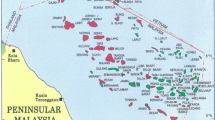The static and dynamic characteristics of a marine sandstone bottom-water heavy oil reservoir include low structural amplitude, small thickness, strong bottom water energy, high watercut rise speed, significant differences in the watercut change law of wells, etc. Due to the complexities of accurate description of the sweep range and ridge shape of high watercut production wells, the evaluation and prediction of the remaining oil distribution is problematic, as well as the feasibility of the adjustment wells. In this paper, we have studied the dynamic characteristics of the water ridge of horizontal production wells in marine sandstone bottom-water heavy oil reservoirs. First, based on the physical simulation experiments, we discuss the overall morphological characteristics of the water ridge after the bottom water rise and the changes caused by the influence of an interlayer, considering the effect of the horizontal production wells and natural water driving. Second, a new method is proposed for calculating the characteristic shape of the water ridge in the heavy oil reservoir in the presence of the bottom water. The new method can be used for quick and accurate calculations of a 3D water ridge shape under horizontal production wells in reservoirs, with or without interlayers. It can also facilitate the quantitative evaluation of the water ridge sweep range of production wells in the high watercut periods. The new method can be applied to predict the remaining oil distribution range and reserves and provide important technical background for development adjustment measures and potential tapping for this type of heavy oil reservoir.








Similar content being viewed by others
References
P. Jiang, G. Zhang, X. He, Z. Liu, and T. Ma, “A dynamic prediction method for bottom water coning,” Drill. Prod. Technol., 30(2), 71-73 (2007).
J. Hou and L. Cheng, “Calculation method for the water cone height of bottom-water reservoir,” J. Xi’an Shiyou Univ. (Nat. Sci. Ed.), 21(3), 23-26 (2006).
C. Li, H. Song, and H. Qin, “Computation formula of critical production oil wells in reservoir with bottom water and confining bed,” P.G.O.D.D., 12(4), 43-46 (1993).
X. Zhao and S. Zhu, “Prediction of water breakthrough time for oil wells in low-permeability bottom water reservoirs with barrier,” Pet. Explor. Dev., 39(4), 471-474 (2012).
P. Cao, S. Chang, C. Dai, X. Luo, and J. Zhao, “A study of critical rate of a horizontal well in a reservoir with bottom-water drive,” J. Chongqing Univ. Sci. Technol. (Nat. Sci. Ed.), 16(2), 63-65 (2014).
F. M. Giger, “Analytic 2-D models of water cresting before breakthrough for horizontal wells,” SPE Res. Eng., 4(04), 409-416 (1989).
P. Hu, D. Bian, Z. Fan, X. Liu, and L. Cheng, “Calculation of water cresting height for horizontal well in bottom water reservoir with interlayer,” J. Northeast Pet. Univ., 42(1), 103-111 (2018).
E. Ozkan and R. Raghavan, “Performance of horizontal wells subject of bottom-water drive,” SPE Res. Eng., 5(03), 375-383 (1990).
Z. Fan and F. Lin, “A study of critical rate of a horizontal well in a reservoir with bottom-water drive,” Pet. Explor. Dev., 21(1), 65-70 (1994).
Q. Wang, X. Wu, and G. Liu, “Water extraction and cone control of horizontal well in exploitation of bottom water reservoir,” Pet. Explor. Dev., 32(1), 109-112 (2005).
Q. Huang, Y. Lu, Y. Fu, C. Chen, and Tong Kai, “Prediction method of water breakthrough time of horizontal wells in bottom water reservoir with barrier,” Pet. Geol. Recov. Eff., 23(6), 82-86 (2016).
Y. Qu, G. An, W. Zhou, J. Xu, and Y. Geng, “The analysis of influencing factors on development of horizontal wells in bottom water drive reservoir,” Sci. Technol. Eng., 13(12), 3406-3409 (2013).
W. Zou, Y. Yao, Q. Wang, Y. Huai, P. Xiao, and M. Liu, “Study on influential factors of water cresting morphology in horizontal well of bottom water reservoirs,” Pet. Geol. Recov. Eff., 24(5), 70-77 (2017).
J. Gu, H. Jiang, Y. Wu, M. Guo, and B. Yi, “Quantitative description of vertical well water coning in bottom water reservoir with no interlayer,” Pet. Geol. Recov. Eff., 19(6), 78-81 (2012).
W. Zhang, T. Li, C. Liu, Y. Zhang, and R. Fu, “New method for quantitative description of water cone shape of vertical well in bottom water reservoir,” Nat. Gas Oil, 32(3), 34-37 (2014).
H. Li and Y. J. Meng, “A simplified study model of water ridge advance in horizontal wells,” J. Daqing Pet. Inst., 18(1), 32-34 (1994).
Y. Chen, “Derivation of relationships of water drive curves,” Acta Pet. Sin., 6(2), 69-78 (1985).
W. Gao and J. Xu, “Theoretical study on common water-drive characteristic curves,” Acta Pet. Sin., 28(3), 89-92 (2007).
G. P. Willhite, Waterflooding, SPE, USA, pp. 60-61(1986).
T. Ahmed, Reservoir Engineering Handbook, Petroleum Industry Press, Beijing, China, pp. 288-330 (2009).
A. Datta-Gupta, “Streamline simulation: a technology update,” J. Pet. Technol., 52(12), 68-84 (2000).
Author information
Authors and Affiliations
Corresponding author
Additional information
Translated from Khimiya i Tekhnologiya Topliv i Masel, No. 4, pp. 94–98, July–August, 2021.
Rights and permissions
About this article
Cite this article
Ke, L., Jinqing, Z., Guojin, Z. et al. A New Method for Calculating the Characteristic Shape of the Water Ridge Under Horizontal Production Wells in Marine Sandstone Heavy Oil Reservoirs with Bottom Water. Chem Technol Fuels Oils 57, 690–697 (2021). https://doi.org/10.1007/s10553-021-01294-z
Published:
Issue Date:
DOI: https://doi.org/10.1007/s10553-021-01294-z




